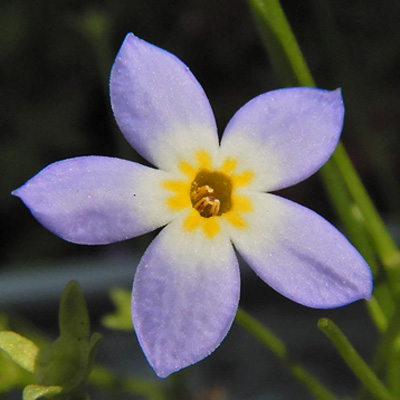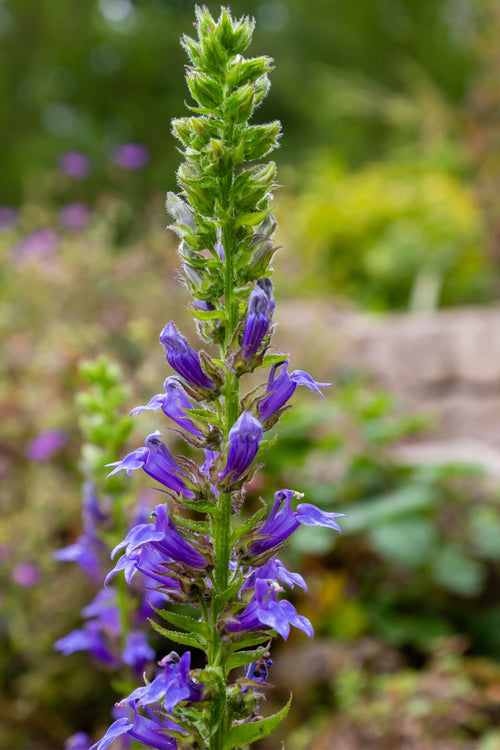Bluets: A Profound Exploration of Nature's Delicate Beauty
Certain gems in the vast tapestry of nature's offerings exist that captivate the senses and ignite the imagination. Among these treasures, Bluets, scientifically known as Houstonia caerulea, emerge as enchanting symbols of simplicity and elegance. These petite, delicate wildflowers, with their dainty blue petals, possess a profound allure that has fascinated botanists, poets, and nature enthusiasts for centuries.

Botanical Characteristics
Bluets are a fascinating plant species that are indigenous to the Rubiaceae family and indigenous to North America. They prefer to grow in areas where the soil is moist and acidic, such as pine barrens, meadows, and woodland edges. Bluets are small and delicate, measuring just a few millimeters in diameter, but their impact on the landscape is immense. They are characterized by their stunning four-petaled, star-shaped blossoms that come in a range of colors from pale sky blue to deep azure.
Each Bluets flower emerges from a slender stem and forms a cluster that covers the ground with a delicate blue hue. The cluster can contain several dozen flowers, creating a beautiful blue carpet on the ground. The flowers are so small that they can be challenging to spot, but they make a stunning sight when they bloom. Bluet flowers symbolize hope; when they bloom, they bring a sense of calm and serenity to the environment.
Bluets are essential to the ecosystem as they provide food and shelter for insects such as bees and butterflies. They are also used in traditional medicine to treat various ailments such as stomach pain and fever. In addition, Bluets are a popular choice for landscaping as they add a pop of color and beauty to any garden. In short, Bluets are a fascinating and valuable plant species that can bring joy and benefits to humans and the environment. Bluets' foliage consists of small, lance-shaped leaves arranged in opposite pairs along wiry stems. These leaves, typically glossy green in color, serve as a verdant backdrop to the ethereal blossoms, enhancing their visual appeal. Bluets are perennial plants, often forming expansive colonies through creeping rhizomes that spread gradually over time, creating breathtaking carpets of blue amidst their natural habitats.
/filters:strip_exif()/assets/plants/plant_28173/plant_28173_shoot_20191231232715.jpg)
Cultural Significance Of Bluets
Bluets, also known as Quaker Ladies, are flowering plants that have played a substantial part in human culture and folklore for centuries. Indigenous peoples of North America held these delicate, four-petaled flowers in high regard for their medicinal properties, which they used to treat a wide range of ailments, such as fevers, digestive disorders, and respiratory issues. The Bluets were also believed to be effective in easing the symptoms of women's health issues, including menstrual cramps and childbirth.
Besides their medicinal benefits, Bluets had symbolic significance in traditional rituals and ceremonies, as they were believed to represent spiritual enlightenment, purity, and harmony. For instance, the Cherokee people of North America used Bluets as part of their purification rituals, while the Iroquois employed them in their Thanksgiving ceremonies.
Moreover, literature and poetry have also celebrated the beauty and symbolism of Bluets, with writers like Maggie Nelson and Emily Dickinson drawing inspiration from these flowers. The latter once wrote, "The Bluest Bluebonnets - / Are Nature's gentlest friends - / Their fragrance - tender as a Rose - / Their sighing - gentlest sound."
In conclusion, Bluets have been essential to human culture since ancient times, and their significance continues today.
In European folklore, Bluets were associated with notions of love and fidelity, often featured in romantic legends and poetry as tokens of affection exchanged between lovers. The delicate beauty of these flowers inspired countless artists and writers, including the renowned naturalist Henry David Thoreau, who waxed poetic about their enchanting allure in his literary works.
/filters:strip_exif()/assets/plants/plant_28170/plant_28170_shoot_20191231222015.jpg)
Ecological Importance Of Bluets
Beyond their aesthetic appeal and cultural significance, Bluets are critical in keeping the balance within their native ecosystems. As early-blooming plants, Bluets provide an essential food source for early-season pollinators such as bees, butterflies, and hoverflies, ensuring their survival during critical periods of nectar scarcity. Moreover, Bluets contribute to soil stabilization and erosion control through their extensive root systems, preventing the loss of valuable topsoil in vulnerable habitats.
Bluets also indicate environmental health, thriving in habitats with minimal human disturbance and healthy soil conditions. Their presence serves as a barometer of ecosystem vitality, signaling the overall well-being of the surrounding environment. Consequently, efforts to conserve Bluet and their native habitats are essential for preserving biodiversity and safeguarding the delicate balance of nature.
Cultivation and Care for Bluets
If you're interested in cultivating Bluets, it's essential to replicate their biological habitat to ensure their success. Bluets, wildflowers, prefer to grow in well-drained, acidic soils rich in organic matter. They thrive in locations with plenty of sunlight.
It's worth noting that Bluets are resilient and can withstand periods of drought once they have established themselves. This means they require minimal watering, although you may need to water them occasionally during particularly dry spells.
Pruning your Bluets is essential for promoting bushier growth, encouraging the plant to produce more lateral shoots. It's best to prune them back in the early spring or late winter, just before the new growth begins. You can also remove any dead or diseased growth at this time.
Bluets are relatively low-maintenance plants perfect for gardeners who want to add a pop of color to their outdoor space without committing to much upkeep.
Propagation of Bluets can be achieved through seeds and division of established clumps. Sowing seeds in early spring or dividing mature plants in autumn are optimal methods for expanding Bluets colonies and introducing these charming flowers to new garden spaces. With proper care and attention, Bluets can thrive in various garden settings, adding a touch of natural beauty and tranquility to landscapes large and small.
In conclusion, Bluets are exquisite examples of nature's unparalleled beauty and resilience. From their delicate blossoms to their cultural significance and ecological importance, these charming wildflowers continue to captivate the hearts and minds of all who encounter them. As symbols of purity, harmony, and environmental stewardship, Bluets inspire us to appreciate the natural world's wonders and cultivate a deeper connection with the landscapes that sustain us. In their fleeting blooms, we find solace, joy, and a profound reminder of the enduring power of nature's splendor.



















































